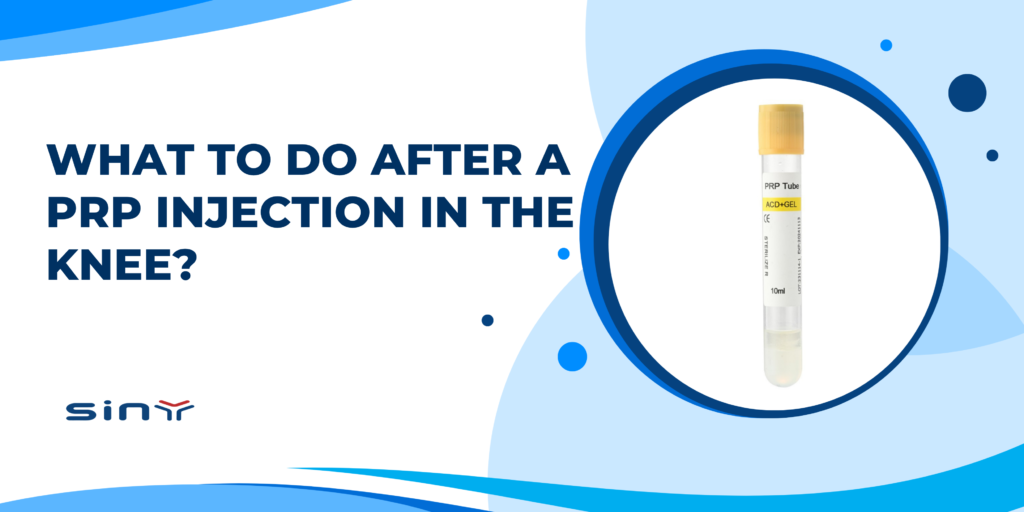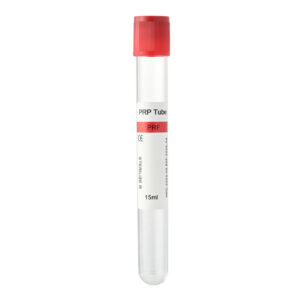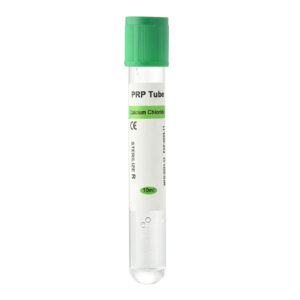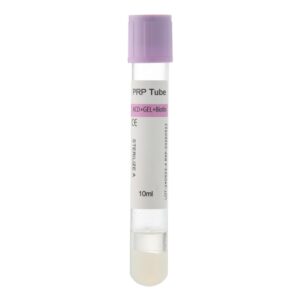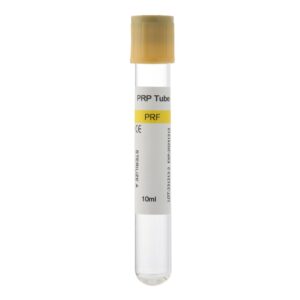What to do after a PRP injection in the knee? Platelet-rich plasma (PRP) therapy is at the forefront of regenerative medicine, offering a promising non-surgical option for knee osteoarthritis and other musculoskeletal conditions. As clinicians and medical suppliers, you are pivotal in delivering the best possible outcomes for patients. This not only involves perfecting the injection technique but also providing comprehensive post-procedure guidance. The quality of care following a PRP injection is just as crucial as the procedure itself, significantly influencing the treatment’s efficacy and patient satisfaction. Furthermore, the quality of the PRP concentrate directly depends on the PRP separation system used and plays a foundational role in the healing process.
Immediate Post-Injection Care: The First 72 Hours
The initial three days following a PRP knee injection are critical for initiating the healing cascade. During this period, the concentrated platelets and growth factors begin to interact with the damaged tissues. Clinicians should advise patients to expect mild to moderate pain or discomfort at the injection site, as this normal inflammatory response indicates that the healing process has begun.
Key Patient Instructions:
- Rest and Activity Modification: Advise patients to rest on the day of the procedure and limit the use of the injected knee for the next two days. Patients should strictly avoid strenuous activities, heavy lifting, and high-impact exercises. However, clinicians encourage gentle movement and range-of-motion exercises to prevent stiffness and help the PRP integrate into the surrounding tissues.
- Pain Management: It is crucial to instruct patients to avoid Non-Steroidal Anti-Inflammatory Drugs (NSAIDs) such as ibuprofen and naproxen, as these medications can interfere with the essential inflammatory process that PRP therapy stimulates. Acetaminophen may be used for pain relief if necessary. Applying heat to the area for 15-20 minutes a few times a day can also help manage discomfort and improve blood flow. Clinicians generally advise patients to avoid applying ice during the first 72 hours because it can constrict blood vessels and hinder the inflammatory healing response.
- Lifestyle Considerations: Patients should be advised to avoid hot baths, saunas, and swimming for the first few days to minimize the risk of infection. Staying well-hydrated by drinking plenty of water is important to support the healing process. Additionally, avoiding alcohol and smoking is recommended, as these can impede healing.
The quality of the initial PRP concentrate is paramount for a robust healing response. A superior PRP tube ensures a higher concentration of viable platelets, setting the stage for optimal recovery. Discover the difference high-quality preparation can make with Siny PRP.

Short-Term Recovery and Rehabilitation: Weeks 1-4
After the initial inflammatory phase, the focus shifts to a gradual return to activity and the beginning of structured rehabilitation. This phase is crucial for restoring function and strength to the knee joint. The quality of the PRP injected continues to play a vital role during this period, providing the necessary growth factors for tissue repair and regeneration.
Guidelines for Clinicians and Patients:
- Gradual Increase in Activity: From day four onwards, patients can begin to gradually increase their daily activities. Light, low-impact exercises such as walking or using an elliptical machine can be introduced. The key is to listen to the body and avoid activities that cause a significant increase in pain.
- Introduction of Physical Therapy: Around the second week, introducing a formal physical therapy program can be highly beneficial. A physical therapist can guide the patient through specific exercises to improve range of motion, strengthen the muscles surrounding the knee (quadriceps, hamstrings, glutes), and enhance joint stability.
- Continued Medication Precautions: The restriction on NSAIDs should continue for at least two to four weeks post-injection to avoid disrupting the long-term healing process. It is also important to advise patients to avoid systemic steroids if possible, as these can also negatively impact the regenerative effects of the PRP treatment.
The consistency and purity of the PRP product used are directly linked to the sustained release of growth factors that drive tissue regeneration in this phase. Ensuring you use a reliable PRP system is an investment in better patient outcomes. Learn more about how Siny PRP products can enhance your regenerative medicine offerings.
Long-Term Healing and Return to Full Activity: Beyond the First Month
The benefits of PRP therapy for knee pain are often most apparent after the first month, with continued improvement over several months. The patient’s adherence to the rehabilitation protocol and the initial quality of the PRP treatment heavily influence this long-term success.
Patient Recommendations for Optimal Long-Term Results:
- Progressive Strengthening and Functional Exercises: Physical therapy should continue to progress, incorporating more challenging exercises and functional movements that mimic the patient’s daily activities and recreational goals. This may include balance training, proprioception exercises, and eventually, a gradual return to sport-specific activities.
- Monitoring Progress: Regular follow-up appointments are important to monitor the patient’s progress, address any concerns, and adjust the rehabilitation plan as needed. Clinicians should manage patient expectations, as the full benefits of PRP may take up to three to four months to appear.
- Healthy Lifestyle: Encourage patients to maintain a healthy lifestyle, including a balanced diet rich in nutrients that support tissue healing and maintain a healthy weight to reduce stress on the knee joint.
The ultimate success of a PRP knee injection hinges on the body’s ability to heal and regenerate damaged tissue. The concentration and viability of platelets in the initial injection are critical determinants of this long-term outcome. As a supplier of medical consumables, providing your clients with a PRP tube that consistently delivers a high platelet yield is essential for their clinical success and patient satisfaction. Contact us to learn more about the products.
FAQs
Q1: How long does recovery take after a PRP injection in the knee?
A1: Recovery varies between individuals, but a general timeline involves a few days of initial soreness, followed by a gradual improvement over several weeks. Most patients start to notice significant benefits around the 2-month mark, with continued improvement for up to 3-4 months.
Q2: Can a patient exercise after a PRP knee injection?
A2: Patients should avoid strenuous exercise for the first few days. After this initial period, clinicians encourage a gradual return to low-impact activities, followed by a structured physical therapy program to restore strength and function.
Q3: What pain medication is safe to take after a PRP injection?
A3: Acetaminophen is generally recommended for pain relief. It is crucial to avoid NSAIDs (like ibuprofen and naproxen) for at least 2-4 weeks, as they can interfere with the healing process stimulated by the PRP.
Q4: Why is it important to avoid ice on the injection site initially?
A4: While people often use ice for injuries, clinicians typically avoid it for the first 72 hours after a PRP injection because it constricts blood vessels and suppresses the inflammatory response essential for PRP to work effectively.
Q5: How does the quality of the PRP tube affect treatment outcomes?
A5: The quality of the PRP tube and the entire system is critical. A high-quality system will consistently produce a PRP concentrate with a high platelet count and the optimal composition of growth factors, while minimizing unwanted cells. This directly influences the effectiveness of the treatment and the patient’s healing potential.
Summary
For clinics and distributors in the field of regenerative medicine, the choice of a PRP system is a critical decision that directly impacts patient outcomes. The market is saturated with various PRP kits, making it challenging to discern which products deliver on their promises. A reliable PRP system should consistently produce a high concentration of viable platelets while minimizing red and white blood cell contamination, which can lead to increased inflammation. The ease of use, sterility, and quality control of the PRP tubes are also vital considerations. Partnering with a reputable supplier who can provide a clinically validated and effective PRP system is not just a matter of convenience; it’s a commitment to providing the highest standard of care.

